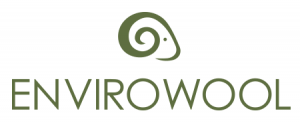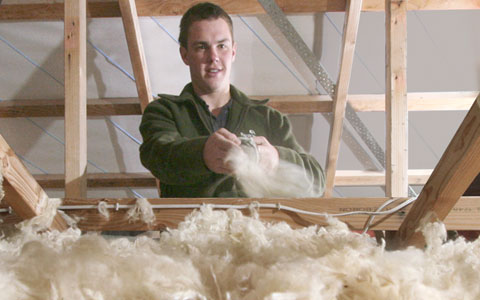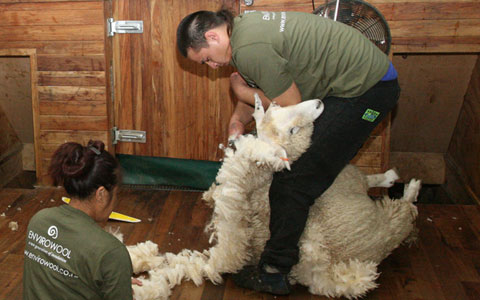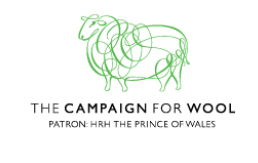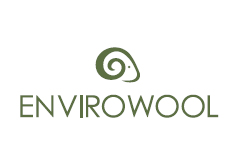Why wool?
Wool is nature’s very own insulation. Its unique structure means it actively absorbs and desorbs moisture and can gain and release heat depending on the external and internal environment, buffering a room against environmental changes. Read more
Wool is a “hygroscopic” (water-repelling) fibre – as the humidity of the surrounding air rises and falls, it absorbs and releases water vapour. It’s also “hydrophilic” (water loving) and, in contrast to most synthetic products, can remove up to 35% of its own weight in moisture, before it even begins to feel wet. Heat is generated and retained during the absorption phase, which makes wool a natural insulator.
Used in the home, wool insulation is safe, natural and highly effective, preventing the loss of energy to the external environment, reducing both energy costs and carbon emissions. Envirowool® uses nothing but pure, home-grown New Zealand wool, meaning we – and you – are supporting Kiwi farmers and enterprise.
Our product is sourced from our South Island supplier based in Christchurch, where wool from different parts of the fleece is specifically hand-picked at shearing time for its superior insulation properties.
A SAFE, HEALTHY SOLUTION
Wool is naturally safe. It’s not known to cause allergies and does not promote the growth of bacteria. Thanks to its high water and nitrogen content, wool is naturally flame-retardant, and has a far higher ignition threshold than many other fibres, and produces less noxious fumes that cause death in a fire. Its performance exceeds that of all other commonly-encountered textile fibres.
- Wool has a low heat of combustion and a low rate of heat release.
- If wool comes into direct contact with another burning surface,it won’t
melt or stick, and is self-extinguishing once the initial ignition source is
removed. - Wool forms an insulating char when it burns and emits less smoke and
toxic gases during combustion than most synthetic fibres.
NATURAL
One hundred per cent natural, wool is a protein fibre formed in the skin of sheep. Since the Stone Age, it’s been appreciated as one of the most effective forms of all-weather protection known to man, and science is yet to produce a fibre which matches its unique properties.
RENEWABLE
As long as there is grass to graze on, every year sheep will produce a new fleece, making wool a renewable fibre source. Woolgrowers actively work to safeguard the environment and improve efficiency, endeavouring to make the wool industry sustainable for future generations.
BIODEGRADEABLE
At the end of its useful life, wool can be returned to the earth, where it decomposes, releasing valuable nutrients into the ground. When a natural wool fibre is disposed of in soil, it takes a very short time to break down; whereas, most synthetics are extremely slow to degrade.
BREATHABLE
Wool fibres are crimped, and when tightly packed together, forming millions of tiny pockets of air. This unique structure allows it to absorb and release moisture without compromising its thermal efficiency.
